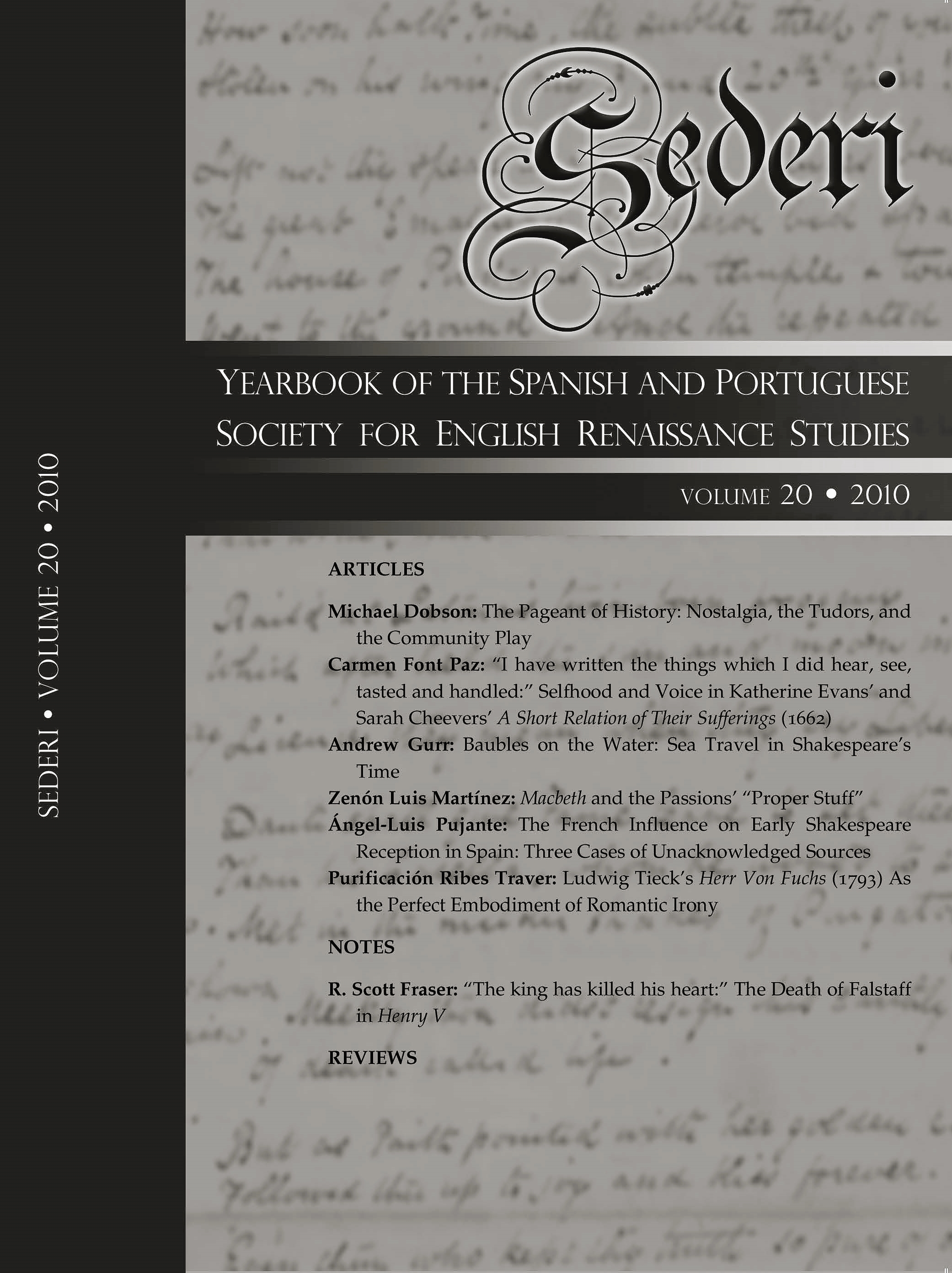Macbeth and the Passions’ “Proper Stuff”
Palabras clave:
Renaissance Tragedy, Shakespeare studies, Macbeth, Humanism, Rhetoric, (the) Passions of the MindResumen
This essay examines early modern conceptions and representations of the passions for establishing notions of self-knowledge and attitudes to self-fashioning in texts ranging from Renaissance psychology to Shakespearean tragedy –with a particular focus on Macbeth. Considered in essence processes of the mind, the passions were believed to manifest themselves through material symptoms such as bodily effects, facial gestures and discourse. Accordingly, the early modern philosophy of man saw in the study of these material manifestations a vehicle to access the soul. By tracing the methodologies for translating the material side of human experience –words, gestures, bodily sensations and signals– into less material truths, early modern philosophy and theatre explored the certainties about inwardness as a necessary dimension of the self, as well as the uncertainties about the ultimate essence of such interiority. In this, Shakespeare’s Macbeth, for its constant focus on outward appearance and rhetoric, stresses the need to focus on matter as a vehicle to explore interiority....
Descargas
Descargas
Publicado
Número
Sección
Licencia
The copyright holder of the published contributions is SEDERI.The hardcopy and an open-access version of the journal will be published simultaneously. The issues will be available online in the SEDERI website (http://www.sederi.org/yearbook/) and other repositories that have signed an agreement with SEDERI.
The authors who publish with this journal agree to the following terms:
a) SEDERI retains copyright of the essay.
b) If the author wishes to republish or rewrite the essay for another journal, or include the essay published in SEDERI in their personal repositories, or in any other way, they should contact the editors to obtain permission to do so. This will entail citing SEDERI as the original source and sending the editors a copy of the new version, or the link to the website, in case of online publishing.
The author(s) hereby warrant(s) that:
a) The essay submitted for publication is an original creation and does not infringe any copyright or property right of another journal, author or publisher.
b) The essay submitted for publication has not been previously published, whole or in part, and is not being considered for publication elsewhere.
c) Written permission has been obtained for any material from other sources included in the essay submitted for publication.




